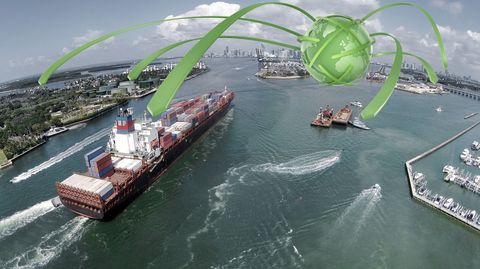Businesses keeping track of developments in the international trade sector are likely to be disappointed by the depressed growth trends expected over the next two years.
Recent reports have shown that 2015 was a poor year in terms of international trade growth, and forecasts from leading organisations have indicated that 2016 and 2017 are unlikely to offer much more cheer in this regard.
Last month, the World Trade Organization (WTO) published a detailed report indicating that the sluggish pace of growth will indeed persist for the foreseeable future, suggesting that companies may need to accept the new market reality and adjust to compensate for as long as it persists.
Discouraging prospects
According to the report, growth in the volume of world trade is expected to remain at 2.8 per cent in 2016, unchanged from the underwhelming 2.8 per cent increase registered in 2015.
Though the rate is then expected to accelerate to 3.6 per cent in 2017, this estimate remains significantly lower than the five per cent annual average seen since 1990. Global GDP is expected to grow by only 2.4 per cent this year and 2.7 per cent next year, with a modest acceleration seen in developing nations offset by a slowdown in more established economies.
For 2016, imports in developed nations are expected to outpace those of developing countries, with a 3.3 per cent rise in the former compared to a 1.8 per cent increase in the latter. Asia, North America and Europe are forecast to be the best performers, while South and Central America are set to contract due to the low prices of oil and other commodities.
The WTO's director-general Roberto Azevedo said: "This will be the fifth consecutive year of trade growth below three per cent. Moreover, while the volume of global trade is growing, its value has fallen because of shifting exchange rates and falls in commodity prices. This could undermine fragile economic growth in vulnerable developing countries. There remains as well the threat of creeping protectionism, as many governments continue to apply trade restrictions and the stock of these barriers continues to grow."
Continuing 2015's weak performance
The weak performance forecasts for the coming years represent a continuation of trends established in 2015, as the WTO report shows.
Trade was unusually volatile during 2015, falling in the second quarter in richer and poorer countries, before experiencing a rebound in the latter part of the year. Positive growth was seen in merchandise trade volume, but the dollar value fell sharply by 13 per cent to $16.5 trillion (€14.61 trillion), down from $19 trillion in 2014. This was caused by variable commodity prices and exchange rates, driven by slowing economic growth in China, resilient US fuel production and differing approaches to international monetary policy, as well as financial market instability harming business and consumer confidence.
Though the overall 2.8 per cent rate met the WTO's expectations, certain factors were unforeseen, such as lower-than-expected US export figures and weak imports in oil-producing countries.
Key issues to be resolved
There are a number of key reasons why these sluggish trends are prevailing, with Asia playing a key part in this. After contributing more than any other region to the recovery of world trade after the financial crisis, the slowdown of growth seen in China and other Asian economies is now having the opposite effect, offsetting the recovery seen in Europe, which has stabilised following recent difficulties.
Business and consumer confidence has slipped in developed countries as a result of the recent poor momentum, while recent financial instability in Asia has abated, but may return if economic data does not align with expectations.
In order to address some of these problems, the WTO is calling for countries worldwide to accelerate their progress on rolling back trade-restrictive measures and implementing the WTO Trade Facilitation Agreement, which will cut trade costs and potentially boost the value of global trade by up to $1 trillion a year.
Additionally, more accommodative monetary policy from the European Central Bank could be a positive step, as this would encourage growth in the euro area and bolster demand for goods and services, including imports.
Mr Azevedo added: "More can also be done to address remaining tariff and non-tariff barriers on exports of agricultural and manufactured goods."






